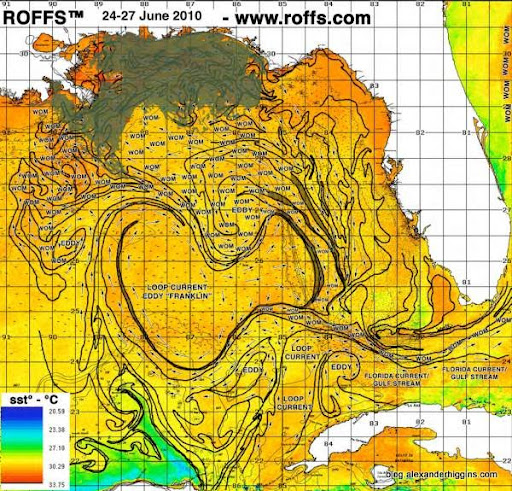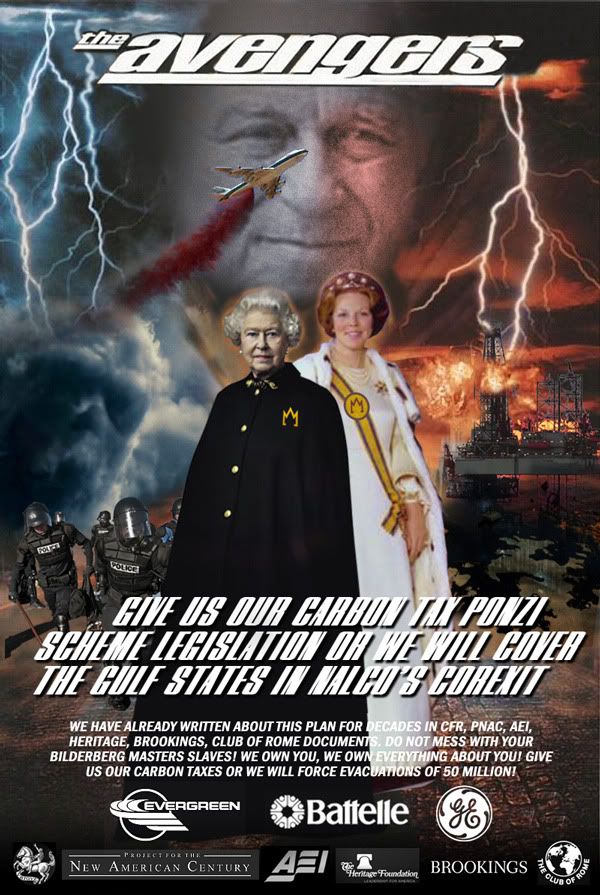(NaturalNews) As CNN is now reporting, the U.S. government has issued a new rule that would make it a felony crime for any journalist, reporter, blogger or photographer to approach any oil cleanup operation, equipment or vessel in the Gulf of Mexico. Anyone caught is subject to arrest, a $40,000 fine and prosecution for a federal felony crime.
CNN reporter Anderson Cooper says,
"A new law passed today, and back by the force of law and the threat of fines and felony charges, ... will prevent reporters and photographers from getting anywhere close to booms and oil-soaked wildlife just about any place we need to be. By now you're probably familiar with cleanup crews stiff-arming the media, private security blocking cameras, ordinary workers clamming up, some not even saying who they're working for because they're afraid of losing their jobs."Watch the video clip yourself at NaturalNews.TV:
http://naturalnews.tv/v.asp?v=203The rule, of course, is designed to restrict the media's access to cleanup operations in order to keep images of oil-covered seabirds off the nation's televisions. With this, the Gulf Coast cleanup operation has now entered a weird
Orwellian reality where the news is shaped, censored and controlled by the government in order to prevent the public from learning the truth about what's really happening in the Gulf.
The war is on to control your mind
If all this sounds familiar, it's because the U.S. government uses this same tactic during every war. The first casualty of war, as they say, is the truth. There are lots of war images the government doesn't want you to see (like military helicopter pilots shooting up Reuters photographers while screaming "Yee-Haw!" over the comm radios), and there are other images they do want you to see ("surgical strike" explosions from "smart" bombs, which makes it seem like the military is doing something useful). So war reporting is carefully monopolized by the government to deliver precisely the images they want you to see while censoring everything else.
Now the same Big Brother approach is being used in the Gulf of Mexico: Criminalize journalists, censor the story and try to keep the American people ignorant of what's really happening. It's just the latest tactic from a government that no longer even recognizes the U.S. Constitution or its Bill of Rights. Because the very first right is
Freedom of Speech, which absolutely includes the right to walk onto
a public beach and take photographs of something happening out in the open, on public waters. It is one of the most basic rights of our citizens and our press.
But now the Obama administration has stripped away those rights, transforming journalists into criminals. Now, we might expect something like this from Chavez, or Castro or even the communist leaders of China, but here in the United States, we've all been promised we lived in "the land of the free." Obama apparently does not subscribe to that philosophy anymore (if he ever did).
So how does criminalizing journalists equate to "land of the free?" It doesn't, obviously. Forget freedom. (Your government already has.) This is about
controlling your mind to make sure you don't visually see the truth of what the oil industry has done to your oceans, your shorelines and your beaches. This is all about keeping you ignorant with a
total media blackout of the real story of what's happening in the Gulf.
The real story, you see, is just too ugly. And the government has fracked up the cleanup effort to such a ridiculous extent that instead of the "transparency" they once promised, they're now resorting to the threat of arrest for all journalists who try to get close enough to cover the story.
Yes, this is happening right now in America. This isn't a hoax. I know, it sounds more like something you might hear about in Saudi Arabia, or Venezuela or some other nation run by dictators. But now it's happening right here in the USA.
As Anderson Cooper reported on CNN:
"Now the government is getting in on the act. Despite what Admiral Thad Allen promised about transparency just nearly a month ago.
Thad Allen: "The media will have uninhibited access anywhere we're doing operations..."
Anderson Cooper: The Coast Guard today announced new rules keeping photographers, reporters and anyone else from coming with 65 feet of any response vessel or booms out on the water or on beaches. What this means is that oil-soaked birds on an island surrounded by a boom, you can't get close enough to take that picture. Shot of oil on beaches with booms? Stay 65 feet away. Pictures of oil-soaked booms uselessly laying in the water because they haven't been collected like they should? You can't get close enough to see that. Believe me, that is out there. But you only know that if you get close to it, and now you can't without permission. Violators could face a fine of $40,000 and Class D felony charges."See the video yourself at:
http://naturalnews.tv/v.asp?v=203Welcome to the (censored) club
All I can say to CNN is:
Welcome to the club! This kind of censorship, intimidation and tyranny has been going on for decades in the field of health, where the Orwellian FDA has treated the entire U.S. public to a nationwide blackout on truthful health information about healing foods and nutritional supplements. CNN has never covered that story, by the way. Most of the mainstream media has, in fact, gone right along with censorship of truthful health information by the FDA and FTC.
Now they're suddenly crying wolf. But where was the media when the FDA was raiding nutritional supplement companies and arresting people who dared to sell healing foods with honest descriptions about how they might help protect your health? The media went right along with the cover-up and never bothered to even tell its viewers a cover-up was taking place.
You see, even CNN is willing to tolerate some Orwellian censorship, as long as its advertisers are okay with it. The only reason they're talking about censorship in the Gulf of Mexico right now is because oil companies don't influence enough of their advertising budget to yank the story.
Censorship is not okay in a free society
I like the fact that CNN is finding the courage to speak up now about this censorship in the Gulf, but I wish they wouldn't stay silent on the other media blackouts in which they have long participated. Media censorship is bad for any nation, and it should be challenged regardless of the topic at hand. When the media is not allowed to report the truth on a subject -- any subject! -- the nation suffers some loss as a result.
Without the light of media scrutiny, corporations and government will get away with unimaginable crimes against both humanity and nature. That's what's happening right now in the Gulf of Mexico: A
crime against nature.
Obama doesn't want you to see that crime. He's covering it up to the benefit of BP. He's keeping you in the dark by threatening reporters and photographers with arrest. How's that for "total transparency?"
The only thing transparent here is that President Barack Obama has violated his own oath of office by refusing to defend the Constitution. By any honest measure, in fact, these actions, which are endorsed by the White House, stand in direct violation of the U.S. Constitution. And that means this new censorship rule in the Gulf, which suspends the First Amendment, is unconstitutional. It also means those who decided on this rule are
enemies of freedom.
They are the ones who should be arrested and hauled off to federal prison, not the CNN reporters who are trying to cover this story.
The seeds of tyranny
The loss of life in the Gulf of Mexico isn't the only catastrophe taking place here, you see: Now we're losing our freedoms while our government tries to intentionally blind us all from the truth of what's happening on our own public beaches.
When those who seek truth are branded criminals by the government, it is only a matter of time before that government expands its criminalization labeling to include anyone who disagrees with it.
These are the seeds of tyranny, and Obama is planting them at your doorstep right now.
What BP did to the Gulf Coast, Obama is now doing to your freedom.







 Quote
Quote